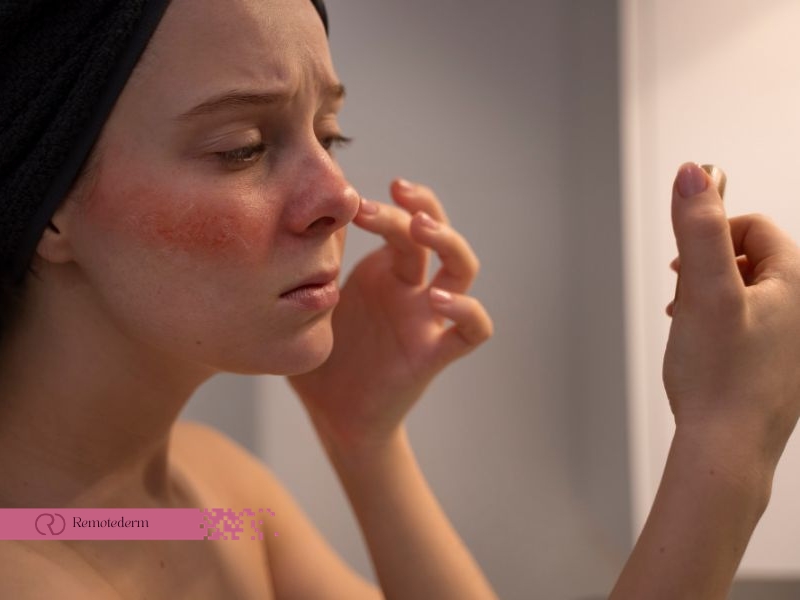Rosacea is a skin disorder that affects millions of people worldwide. It is distinguished by facial redness, flushing, and visible blood vessels, which are frequently accompanied by pimples and swelling. While rosacea can affect anyone, it primarily affects people with fair skin and develops in adulthood. We will look at the various types of rosacea, their symptoms, and how to effectively manage this skin condition in this comprehensive guide.
Understanding Rosacea
Before we explore the various types of rosacea, it’s crucial to have a basic understanding of the condition. Rosacea is a chronic skin disorder that typically presents in the central part of the face, including the cheeks, nose, forehead, and chin. It can manifest in different ways, making it essential to recognize its various subtypes for proper diagnosis and treatment.
Types of Rosacea
Rosacea is a complex skin condition that doesn’t conform to a one-size-fits-all model. It manifests in several distinct forms, each characterised by a unique set of symptoms. Let’s explore the different types of rosacea:
Erythematotelangiectatic Rosacea (ETR)
This type of rosacea is characterised by persistent redness and visible blood vessels on the face. People with ETR often experience flushing and a sensation of warmth in their skin. This type of rosacea can be mistaken for sunburn. Individuals with ETR may find that their facial skin turns red in response to triggers like sunlight, heat, or certain foods, making it challenging to conceal this chronic redness.
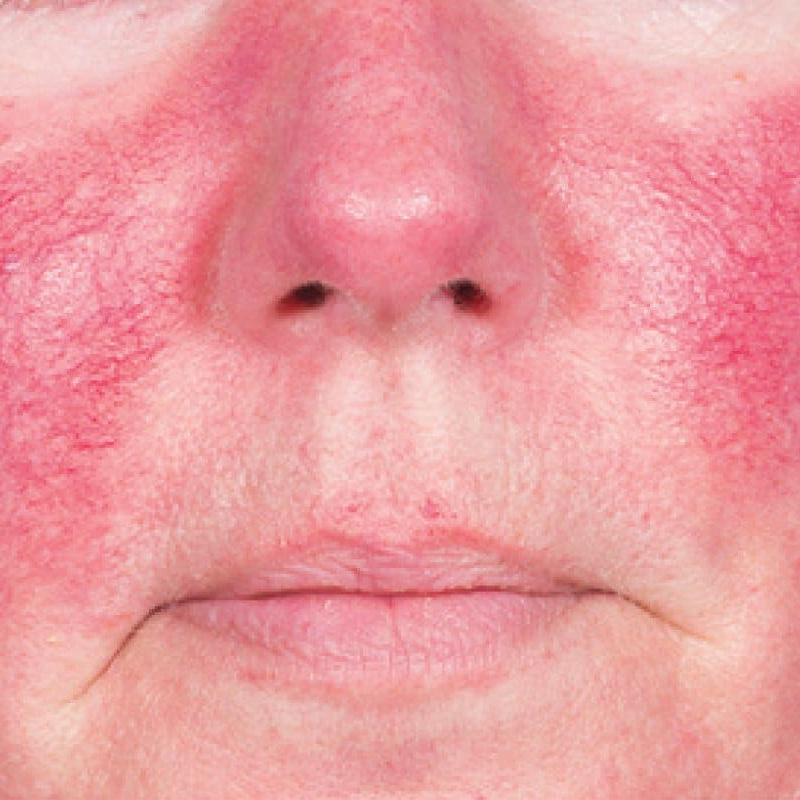
Papulopustular Rosacea
Commonly known as acne rosacea, this type presents with redness, swelling, and the presence of pimples and pustules. It’s essential to distinguish it from traditional acne to ensure appropriate treatment. While papulopustular rosacea bears a resemblance to acne, it requires a different approach to management. The redness and inflammation can be distressing, and individuals may experience a burning or stinging sensation in addition to the appearance of acne-like lesions.
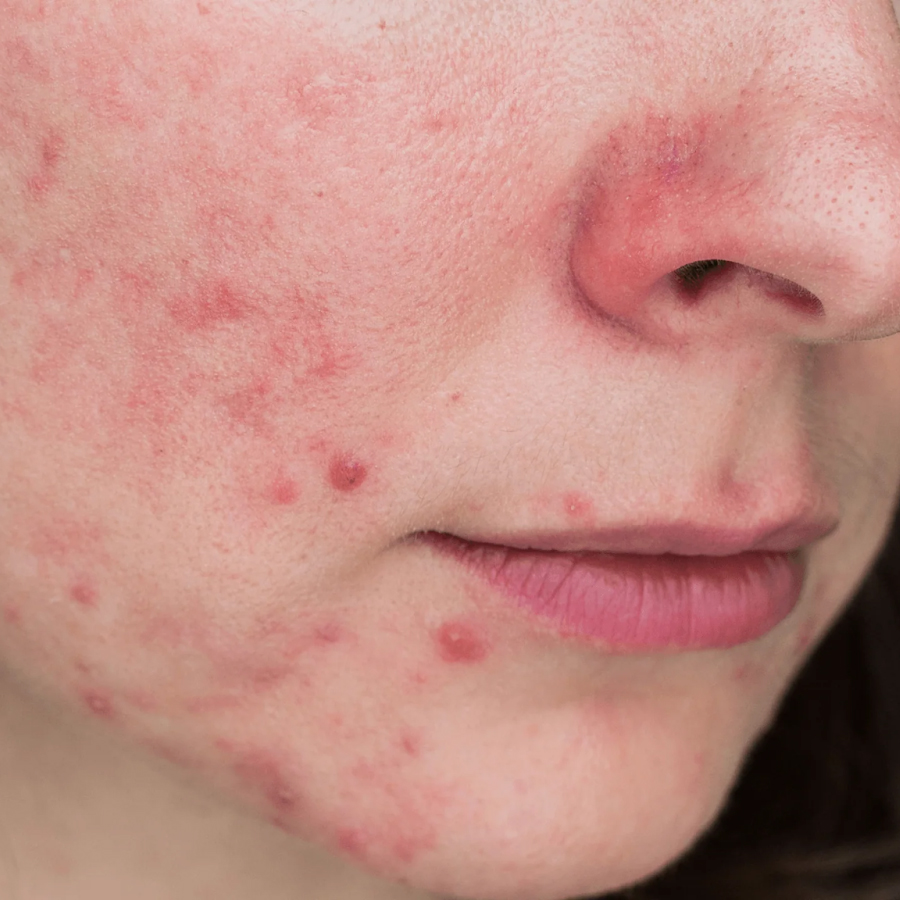
Phymatous Rosacea
Phymatous rosacea is the least common subtype and often leads to thickened skin, irregular texture, and enlargement of the nose (rhinophyma). The chin, forehead, and ears can also be affected. Phymatous rosacea can be particularly distressing due to its impact on facial appearance. Individuals with this subtype may notice their skin becoming progressively thicker and more textured, which can significantly affect self-esteem. Rhinophyma, characterised by the enlargement of the nose, is one of the most recognizable features of this subtype, but it’s essential to remember that phymatous rosacea can extend beyond the nose area.
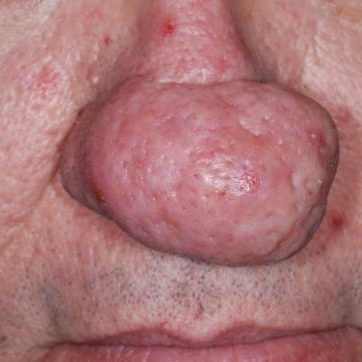
Ocular Rosacea
Rosacea doesn’t only affect the skin; it can also impact the eyes. Ocular rosacea is characterised by redness, itching, burning, and a gritty sensation in the eyes. It can lead to vision problems if left untreated. Ocular rosacea can be particularly uncomfortable, with symptoms extending beyond the facial skin. The sensation of grittiness in the eyes and the potential for vision impairment underscore the importance of timely diagnosis and management.
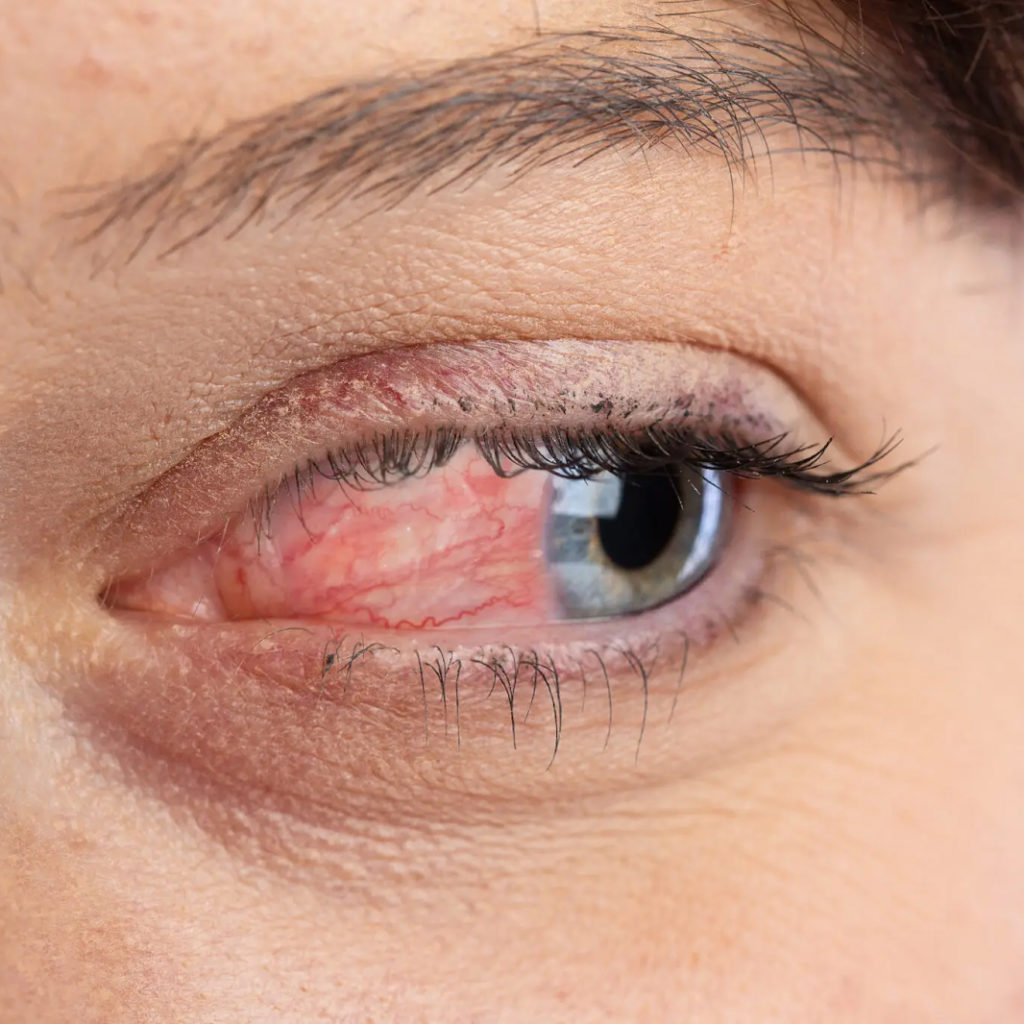
Understanding the various types of rosacea is instrumental in seeking appropriate treatment and management strategies. By identifying the specific subtype and its associated symptoms, individuals can work with healthcare professionals to tailor treatment plans that address their unique needs.
Recognizing the Symptoms
Understanding the symptoms associated with each subtype of rosacea is crucial in effectively managing this complex skin condition. By being able to identify and differentiate the various signs, individuals can take proactive measures to address their unique needs and seek appropriate treatment. Here’s an in-depth breakdown of the key symptoms for each type of rosacea:
Erythematotelangiectatic Rosacea (ETR) Symptoms
ETR is often recognized by its distinctive array of symptoms. Individuals with this subtype frequently experience:
- Persistent Facial Redness: One of the hallmark symptoms of ETR is the persistent redness of the central facial area. This redness may vary in intensity but tends to remain constant.
- Visible Blood Vessels: The appearance of visible blood vessels, often referred to as telangiectasias, is a common feature. These tiny, dilated vessels create a web-like pattern on the skin.
- Flushing: ETR can trigger episodes of sudden flushing, during which the facial skin turns even redder. This flushing may be brought on by various triggers, including sunlight, heat, spicy foods, or stress.
- Burning or Stinging Sensation: Many individuals with ETR report a sensation of warmth or burning in their skin, which can be uncomfortable and distressing.
Papulopustular Rosacea Symptoms
Papulopustular rosacea, also known as acne rosacea, presents with a unique set of symptoms, including:
- Redness: Similar to ETR, redness is a predominant symptom in papulopustular rosacea, but additional features often accompany it.
- Pimples and Pustules: This subtype is characterised by the presence of papules (small, red bumps) and pustules (pus-filled lesions), similar to traditional acne. These can be scattered across the facial skin.
- Occasional Burning or Stinging: Individuals may also experience intermittent burning or stinging sensations in addition to the visible symptoms.
Phymatous Rosacea Symptoms
Phymatous rosacea stands out due to its unique set of symptoms, which can be particularly distressing. Common features include:
- Thickened Skin: One of the defining characteristics of phymatous rosacea is the thickening of the skin, which can lead to a visibly irregular texture.
- Rhinophyma (Enlarged Nose): In severe cases, rhinophyma develops, causing the nose to become enlarged and bulbous. Phymatous rosacea can extend beyond the nose and affect other facial areas like the chin, forehead, and ears.
Ocular Rosacea Symptoms
The symptoms of ocular rosacea can include:
- Red and Irritated Eyes: Affected individuals often experience redness and irritation in the eyes, which can be persistent and uncomfortable.
- Dryness: Ocular rosacea can result in dry eyes, causing discomfort and potential vision problems.
- Itching: The eyes may become itchy and irritated, further adding to the discomfort.
- Sensitivity to Light: Ocular rosacea can make the eyes more sensitive to light, making it challenging to be in bright environments.
- Blurred Vision: In severe cases, untreated ocular rosacea can lead to vision impairment, highlighting the importance of early recognition and treatment.
By familiarizing themselves with these comprehensive descriptions of rosacea symptoms, individuals can take informed steps toward managing their condition effectively and seeking professional guidance when needed. Recognizing the symptoms is the first crucial step on the path to clearer, healthier skin and improved eye health.
Effective Management and Treatment
Managing rosacea involves a combination of lifestyle changes, skincare routines, and, in some cases, medical treatment. Here are some strategies to effectively manage the condition:
Skincare Routine
Follow a gentle daily skincare regimen to maintain the health and appearance of your skin:
- Gentle Cleansing: Use a mild, non-abrasive cleanser to wash your face twice daily.
- Sun Protection: Protect your skin from the sun with broad-spectrum sunscreen and wear a wide-brimmed hat when outdoors.
- Moisturize: Use a hypoallergenic, fragrance-free moisturizer to keep your skin hydrated.
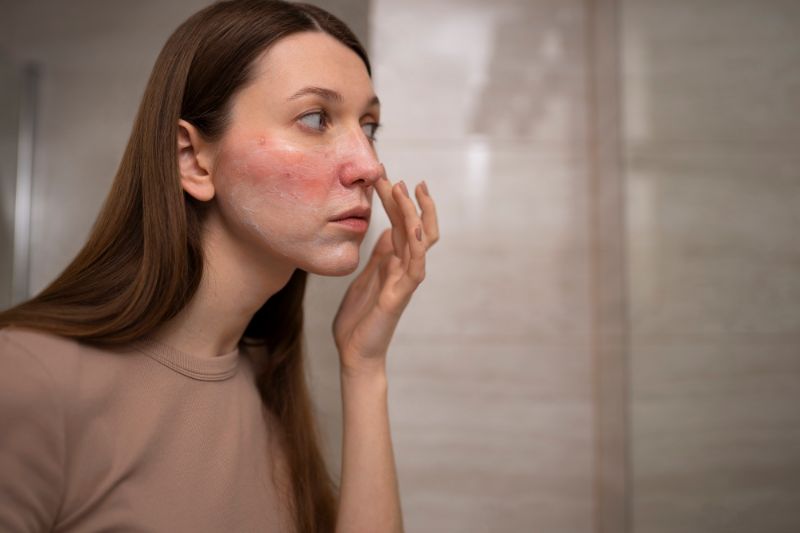
Lifestyle Changes
Make adjustments to your daily routine and skincare choices to manage and reduce rosacea symptoms.
- Identify Triggers: Pay attention to factors that trigger your rosacea flare-ups, such as spicy foods, alcohol, and stress. Avoid or minimize these triggers.
- Avoid Harsh Products: Stay away from skincare products that contain alcohol, menthol, or fragrances, as they can exacerbate symptoms.
Medical Treatment
Explore various medical interventions to address rosacea symptoms:
- Topical Medications: Your dermatologist may prescribe topical creams or gels containing antibiotics or anti-inflammatory agents.
- Oral Medications: In severe cases, oral antibiotics or isotretinoin may be recommended.
- Laser Therapy: For visible blood vessels and redness, laser therapy can be effective.
- Eye Drops: Ocular rosacea may require prescription eye drops to manage symptoms.
Online Rosacea Treatment
Telemedicine and online healthcare platforms offer convenient access to dermatologists and specialized skincare professionals. These professionals can assess your condition remotely, provide personalized treatment plans, and recommend suitable topical medications, oral treatments, or other therapies tailored to your specific needs. Online rosacea treatment options are especially beneficial for individuals who may have limited access to in-person healthcare or prefer the convenience of virtual consultations.
Final Thoughts
In conclusion, rosacea is a complex skin condition that affects people from diverse backgrounds. While managing rosacea can be challenging, it is entirely achievable with the right knowledge and approach. Recognizing the diverse types of rosacea, from the persistent redness of ETR to the acne-like symptoms of papulopustular rosacea, is essential for effective management. Each subtype comes with its unique set of symptoms, necessitating personalized care.
Effective management of rosacea involves a multifaceted approach, including skincare routines, lifestyle adjustments, and medical treatments. Tailored treatment plans, whether sought through in-person consultations or online healthcare platforms, are pivotal in providing relief and restoring confidence to those living with rosacea. By equipping ourselves with knowledge, seeking professional guidance when necessary, and adopting a holistic approach to rosacea management, we can regain control over our skin and eye health, allowing us to confidently embrace life without letting rosacea define us.
FAQs
- Are there natural remedies for rosacea?
Some individuals find relief with natural remedies like aloe vera, green tea, and chamomile, but consult with a healthcare professional before trying them.
- Is rosacea hereditary?
There is a genetic component to rosacea, so a family history of the condition may increase your risk.
- What sets Papulopustular Rosacea apart from traditional acne?
Papulopustular rosacea resembles acne but requires different treatments due to additional redness and occasional burning or stinging sensations.
- Who can get rosacea?
Anyone can develop rosacea, but it primarily affects fair-skinned individuals, usually appearing in adulthood.
